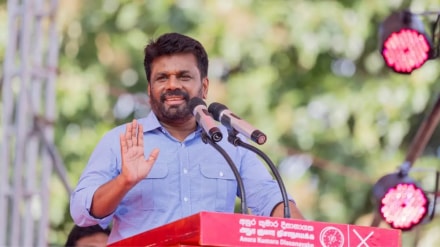Sri Lankan President Anura Dissanayake is set to embark on his first international trip since taking office, with a visit to India scheduled from December 15 to 17. This significant visit, which comes shortly after his historic election win, is seen as a crucial step in strengthening ties between the two neighbouring nations.
The Sri Lankan government confirmed that during his visit, Dissanayake will meet with Indian Prime Minister Narendra Modi and President Droupadi Murmu, accompanied by key officials including Foreign Minister Vijitha Herath and Deputy Minister of Finance Anil Jayantha Fernando. The invitation to visit New Delhi was extended by Indian External Affairs Minister S Jaishankar, who was the first foreign dignitary to visit Sri Lanka following Dissanayake’s election in September.
Dissanayake’s visit comes at a time when Sri Lanka, still recovering from its worst-ever financial crisis in 2022, faces mounting challenges. The island nation defaulted on its $46 billion foreign debt and is grappling with the aftermath of a currency collapse and shortages of essential goods like food, fuel, and medicine. Amid these struggles, Sri Lanka’s foreign relations, particularly with India and China, have come under intense scrutiny.
India’s role in Sri Lanka’s recovery has been pivotal. Over the years, New Delhi has provided significant financial aid and support, which contrasts with China’s growing influence on the island through investments under the Belt and Road Initiative (BRI). China is Sri Lanka’s largest bilateral lender, with loans funding major infrastructure projects such as the Hambantota Port—an asset that has sparked concerns about Sri Lanka’s sovereignty and economic independence.
India, on the other hand, has been keen to safeguard its regional influence and curb Beijing’s strategic footprint in Sri Lanka. In recent years, India has ramped up infrastructure projects, offering alternatives to Chinese investments. The two nations share deep historical, cultural, and economic ties, and Dissanayake’s visit is expected to focus on enhancing cooperation in trade, security, and regional stability.
One of the key areas of discussion during the visit is likely to be Sri Lanka’s debt crisis and its ongoing economic recovery. China, which holds over half of Sri Lanka’s bilateral debt, is expected to be a part of Dissanayake’s diplomatic agenda, with the president set to visit Beijing in January for further talks. The balance between India and China is proving to be a delicate one for Sri Lanka, which must manage its external relations carefully as it seeks financial aid and long-term stability.
Experts view the timing of Dissanayake’s visit to India as significant. “Sri Lanka’s strategic location in the Indian Ocean has drawn global powers, especially China. India’s diplomatic efforts in the region, including efforts to limit Chinese naval access, highlight the broader implications of Sri Lanka’s internal politics on international relations,” said one geopolitical expert.
As Dissanayake begins his term in office, his first international visit to India will undoubtedly have implications for Sri Lanka’s foreign policy and economic future. The visit is seen as an opportunity for the two countries to deepen their ties and work together on overcoming Sri Lanka’s current challenges while navigating the complex geopolitical dynamics in the region.
